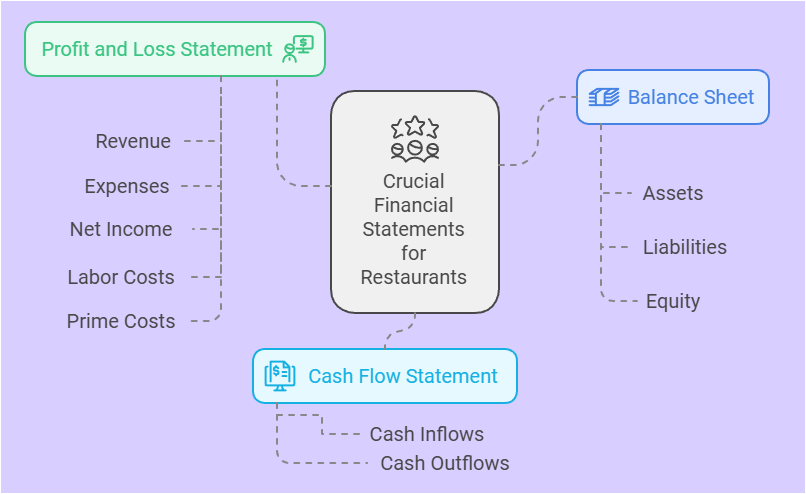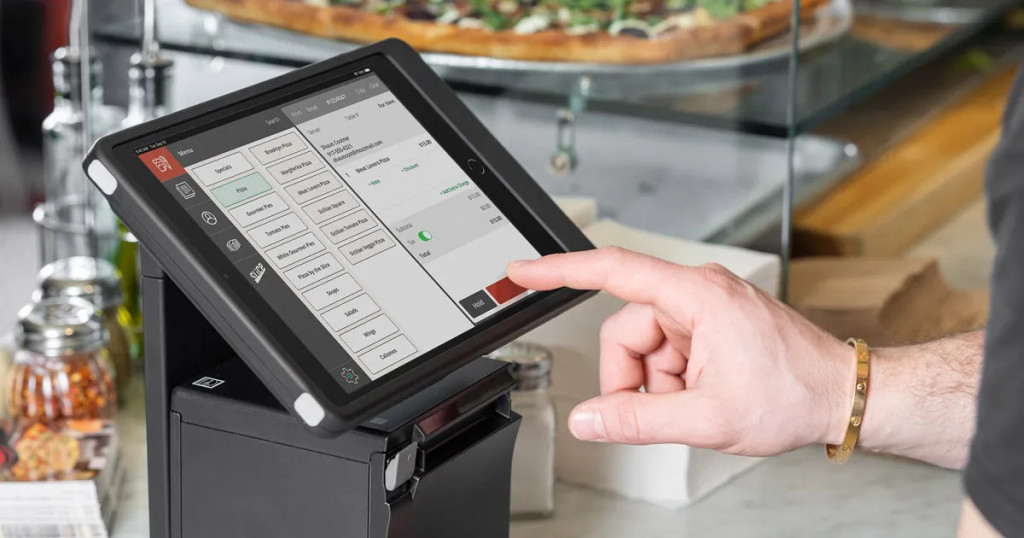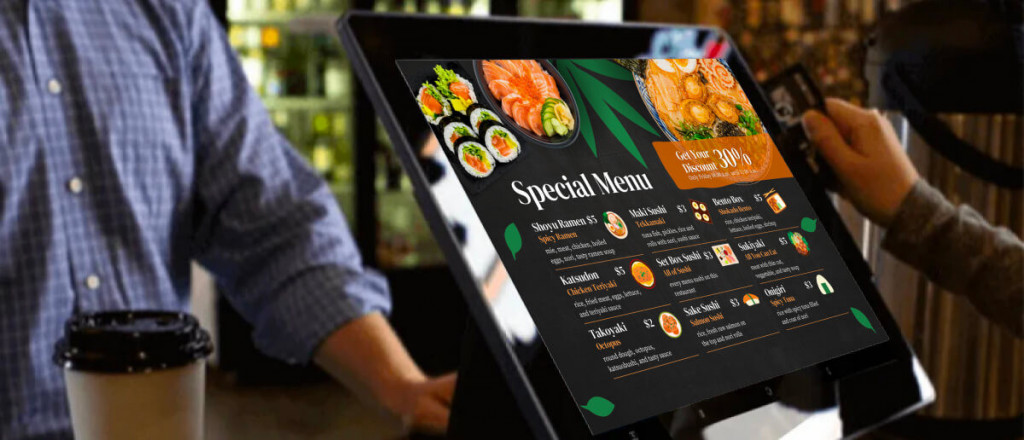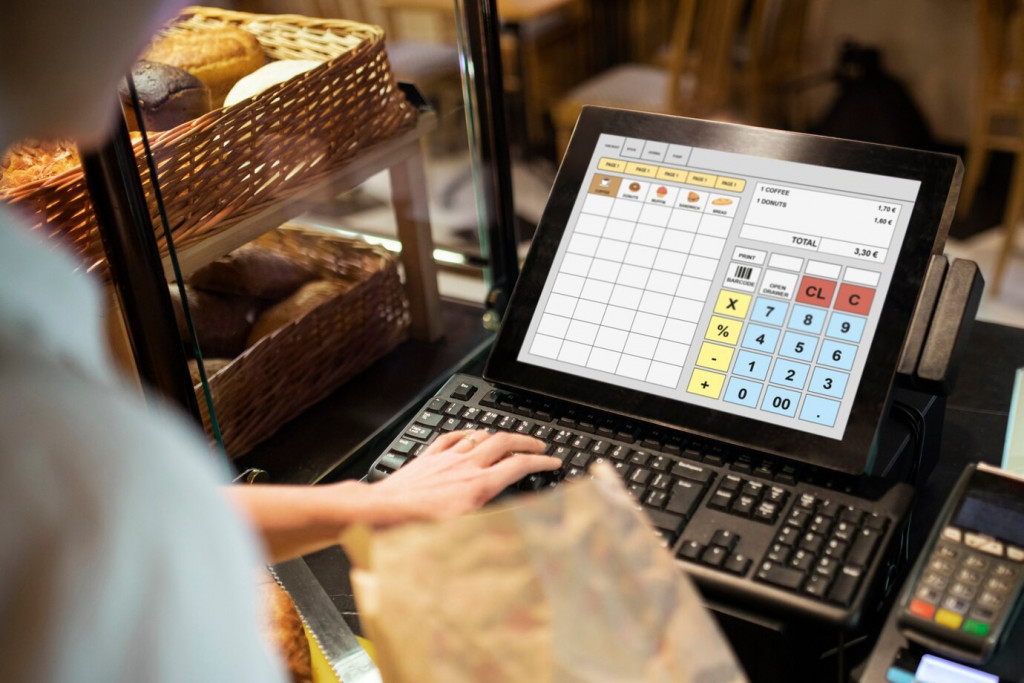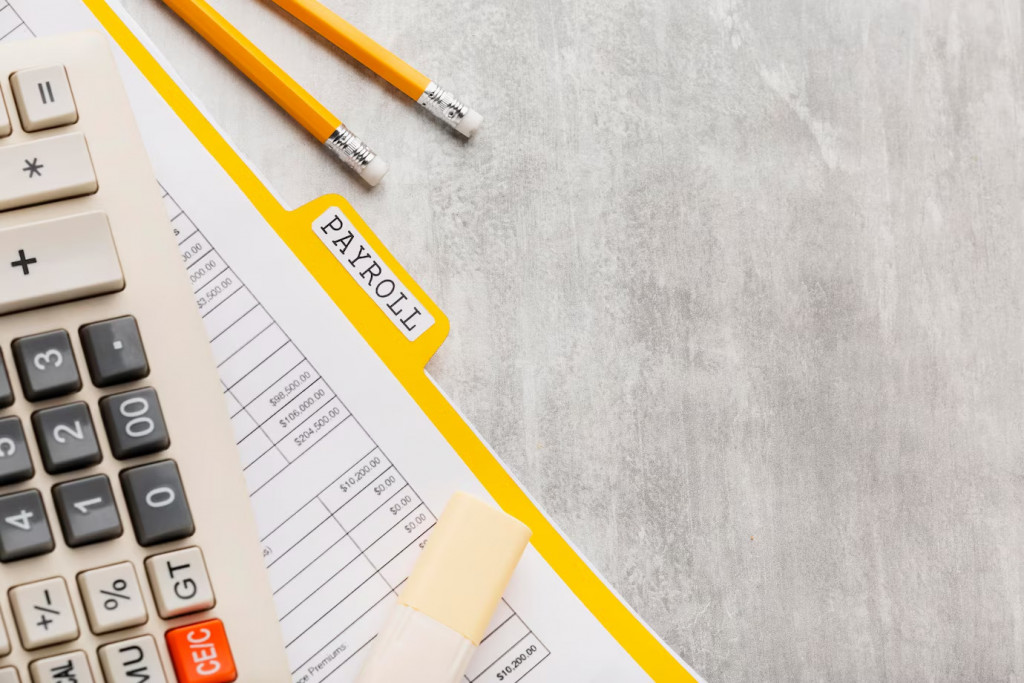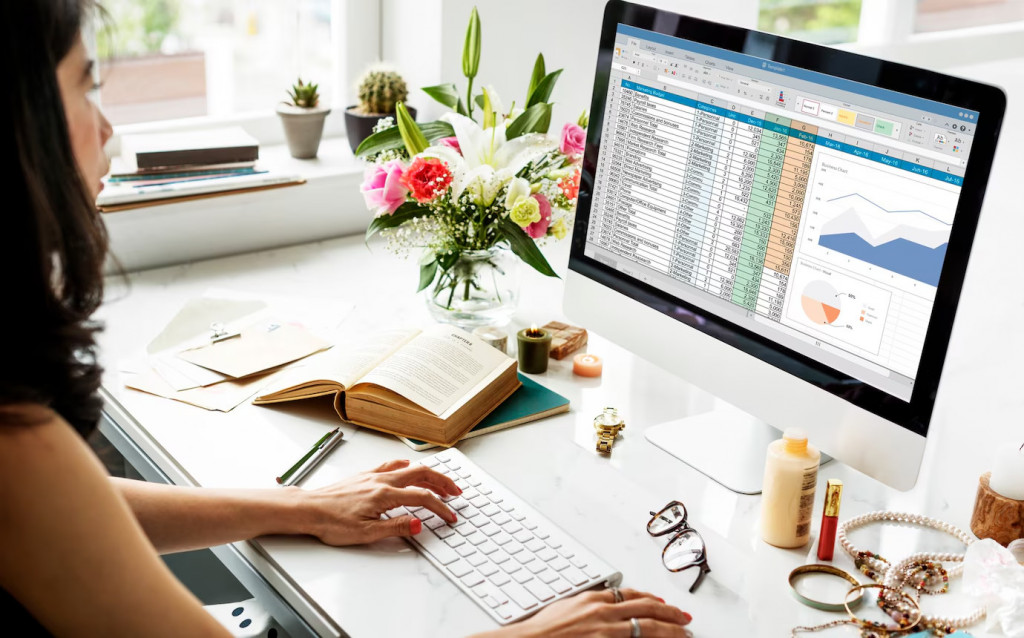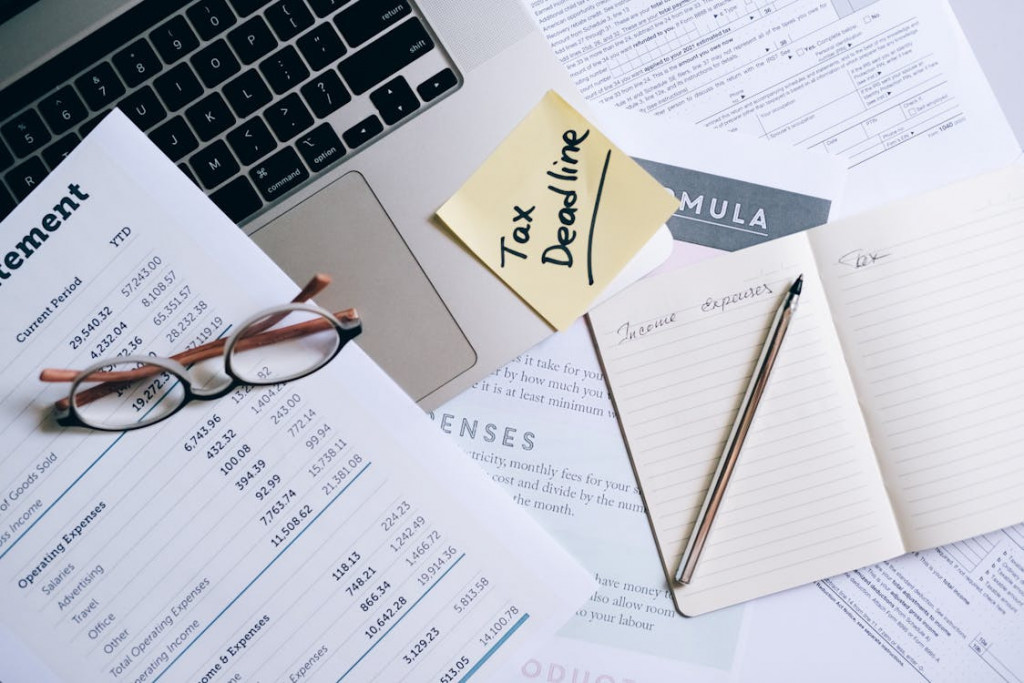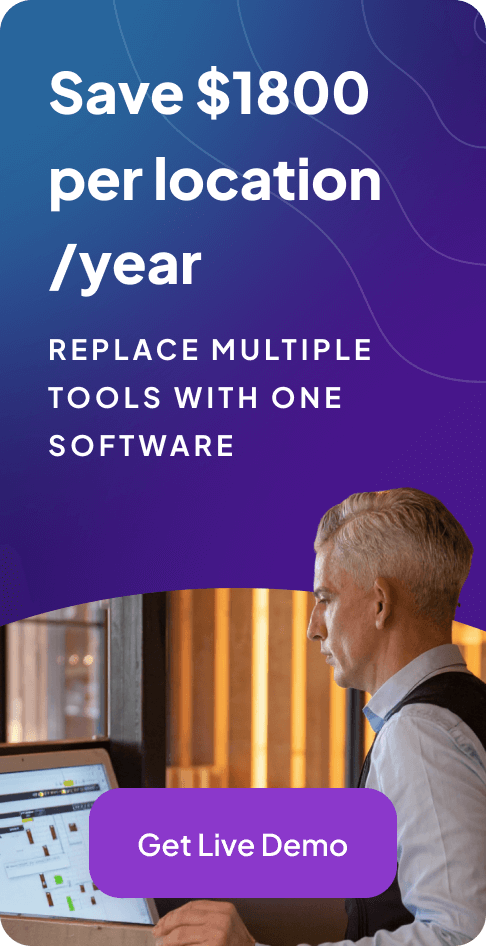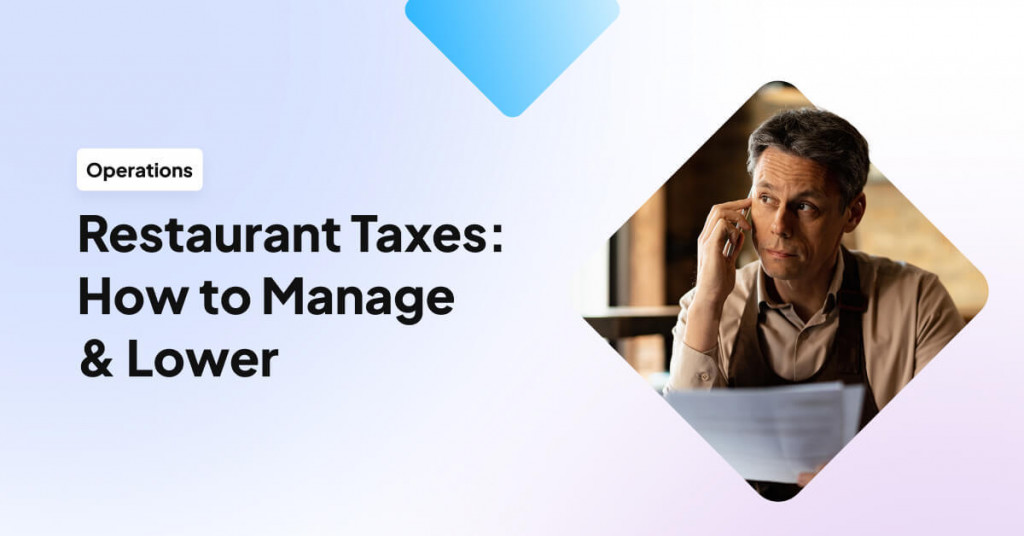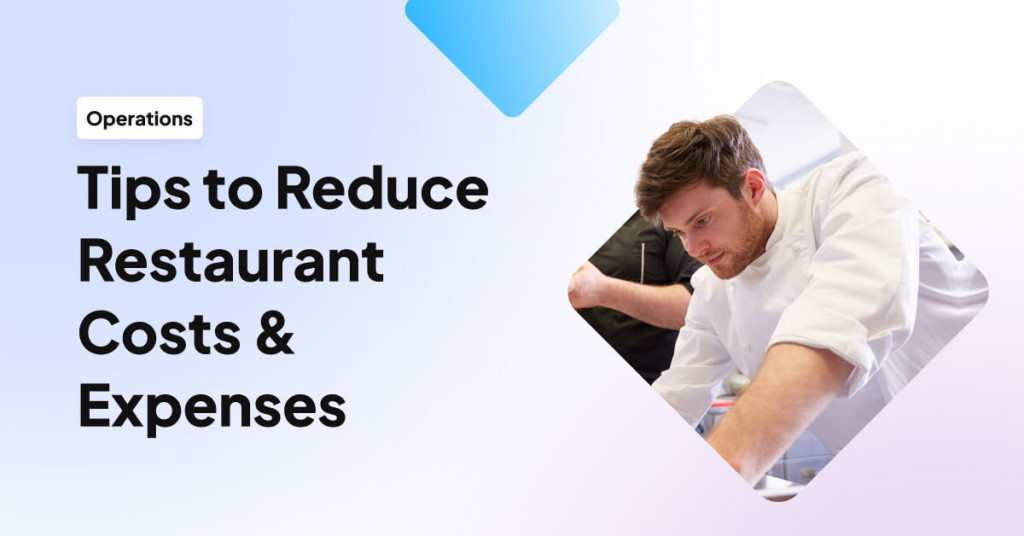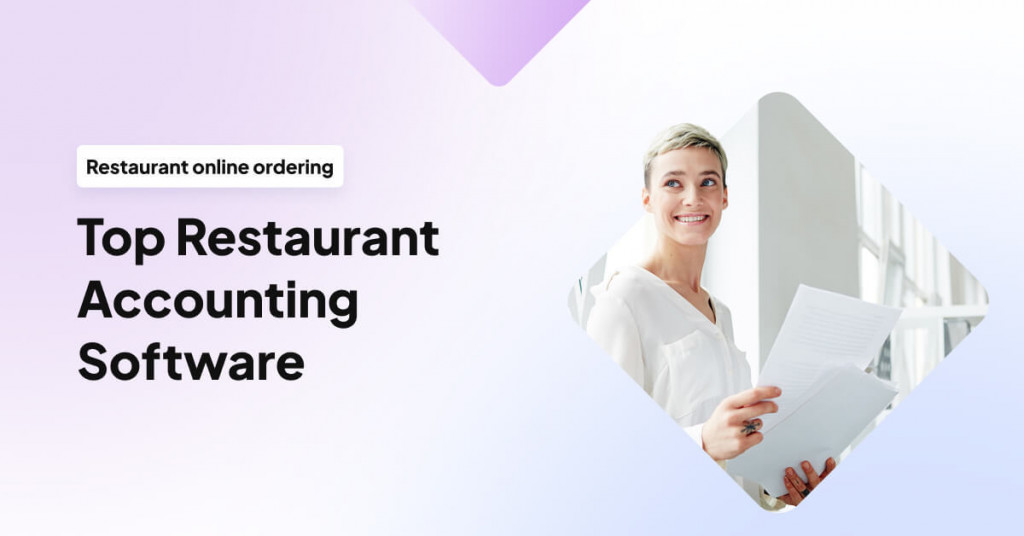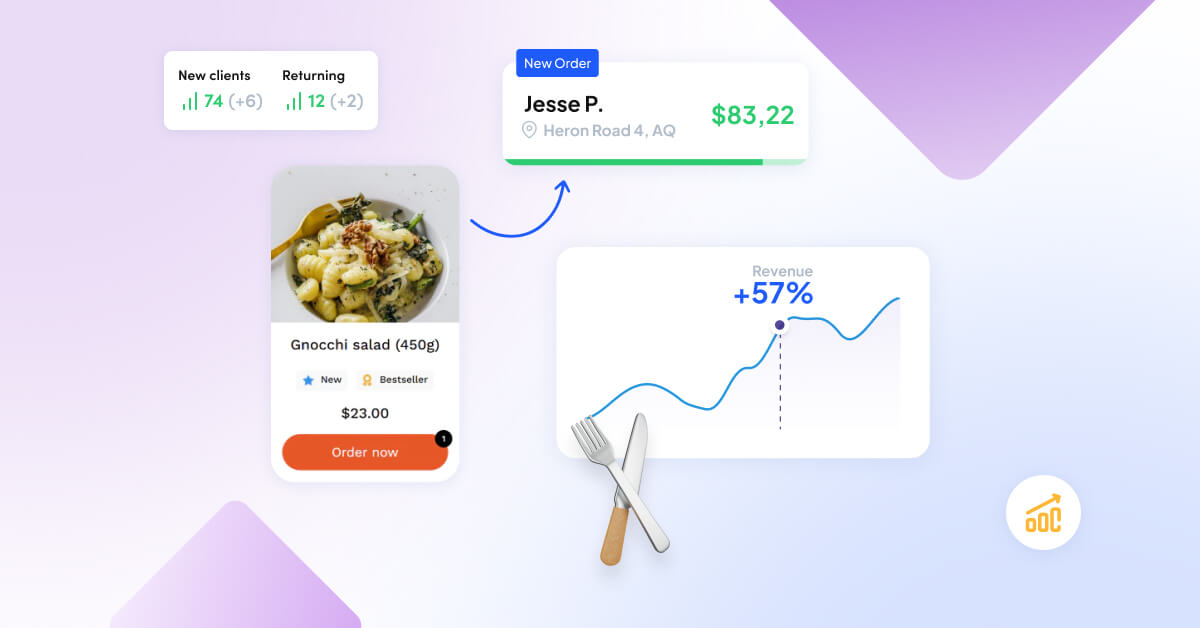Efficient bookkeeping is the backbone of any successful restaurant, helping restaurant owners maintain profitability and make informed decisions.
This guide explores essential tips and practical examples to streamline your restaurant’s bookkeeping process.
Key Takeaways
- Restaurant Bookkeeping: A structured approach to managing financial transactions ensures long-term restaurant profitability and compliance.
- Restaurant Accounting Software: Automates financial processes like payroll and reporting to save time and reduce errors.
- Prime Costs: Monitoring food and labor costs helps maintain control over the largest expenses in the restaurant industry.
- Profit and Loss Statement: A critical financial document for analyzing restaurant revenue, costs, and overall profitability.
- Cash Flow Management: Tracking inflows and outflows ensures sufficient cash availability for daily operations.
- Accounts Payable: Streamlined processes prevent overdue payments and maintain strong supplier relationships.
Understanding Restaurant Bookkeeping Basics
Restaurant bookkeeping involves systematically tracking, managing, and recording all financial transactions to ensure compliance and profitability.
Unlike general accounting, it is tailored to address the unique challenges of the restaurant industry, such as fluctuating labor costs, inventory turnover, and prime costs.
By using tools like restaurant accounting software, restaurant owners can efficiently manage financial transactions and prepare critical documents like the restaurant profit and loss statement.
Key Components of Restaurant Bookkeeping
Effective restaurant bookkeeping focuses on critical areas that directly impact the financial health of a business.
- Tracking labor costs and understanding prime costs are essential to controlling expenses. Regularly updating financial transactions, such as recording sales, payments, and expenses, ensures accurate profit and loss statements.
- Utilizing accounting system tailored for the restaurant industry simplifies these tasks, empowering restaurant owners to manage their books effectively and focus on running their businesses.
- Accurately calculating wages, benefits, and payroll liabilities ensures compliance with regulations and avoids payment errors. Using payroll software or automated systems simplifies this process, saving time and reducing mistakes.
Setting Up Your Bookkeeping System
Establishing an efficient bookkeeping system is crucial for managing the unique financial needs of the restaurant industry.
Start by selecting accounting software that aligns with your business operations, such as tracking financial transactions and creating profit and loss statements.
For restaurant owners, investing in tools that monitor restaurant labor costs and calculate prime costs ensures streamlined processes and data accuracy.
Modern restaurant accounting software often integrates with other systems like POS platforms and online ordering tools.
For example, an online ordering system that syncs with your accounting and POS systems can automatically record sales, inventory adjustments, and expenses.
These integrations reduce manual work, prevent accounting errors, and provide a centralized view of your restaurant business operations, ensuring a seamless and efficient workflow.
Essential Financial Statements for Restaurants
Accurate financial statements are the cornerstone of effective restaurant bookkeeping, offering a clear view of the restaurant business’s financial health. The three most crucial statements for restaurant owners include:
- Profit and Loss Statement: This report outlines revenue, expenses, and net income, helping track labor costs, prime costs, and overall profitability. Regularly reviewing it ensures that you stay on top of financial performance.
- Balance Sheet: A snapshot of your business’s assets, liabilities, and equity, the balance sheet provides insights into the restaurant’s stability and long-term viability.
- Cash Flow Statement: By detailing cash inflows and outflows, this report ensures that you can manage cash effectively for daily operations, avoiding cash shortages.
Using accounting software simplifies the generation and analysis of these reports, helping restaurant owners identify trends, make informed decisions, and maintain financial health.
Calculating Key Metrics
Calculating critical metrics is a cornerstone of effective restaurant bookkeeping, providing insights into operational efficiency and profitability.
Metrics such as prime costs, profit margins, and labor costs help restaurant owners understand their financial standing and make informed decisions.
Leveraging accounting software simplifies these calculations, ensuring accuracy and enabling effective financial reporting for better control over the restaurant business.
Prime Costs: Definition and Calculation
Prime costs represent the combined food costs and labor costs, the largest expenses in the restaurant industry.
To calculate prime costs, add the cost of goods sold (restaurant COGS) and total labor costs. Divide this sum by total sales to determine what percentage of revenue is spent on these essentials.
Keeping prime costs below 60% of revenue is considered a best practice.
Food Costs and Labor Costs: Best Practices to Calculate and Control
- Food Costs: Track inventory purchases and use a standardized recipe costing method to calculate the actual cost of each menu item. Regularly update prices to match market trends and control waste to avoid losing money.
- Labor Costs: Use accounting software to automate payroll tracking and manage payroll liabilities. Monitor schedules and adjust staffing levels during peak and off-peak times to optimize the sales to labor ratio.
Profit Margins: Gross and Net Profit Analysis
- Gross Profit: Subtract COGS from total revenue to determine gross profit. This metric reveals how efficiently food and beverages are being sold.
- Net Profit: After deducting all operational expenses, including rent, utilities, and payroll, from gross profit, the remaining amount is the net profit. Regularly reviewing profit and loss statements ensures a clear understanding of the restaurant’s financial performance and helps improve profitability.
Efficiently Managing Accounts Payable and Receivable
Accounts payable refers to the money a restaurant owes to suppliers, vendors, or other service providers for goods or services received. Properly managing accounts payable ensures timely payments, maintains vendor trust, and avoids late fees.
On the other hand, accounts receivable tracks the income owed to the restaurant, such as outstanding payments from customers or partners. Together, these processes are essential for maintaining cash flow and operational stability.
Streamlining the Accounts Payable Process
Creating an organized system for handling invoices and payments can help avoid late fees or damaged relationships with suppliers.
By implementing automated tools, such as accounting software automates, businesses can track due dates and set up recurring payments for regular expenses.
Efficient management of accounts payable ensures smooth operations and better allocation of resources in the competitive restaurant industry.
Reconciling Accounts to Avoid Discrepancies
Regular account reconciliation minimizes errors and ensures that the financial records align with bank accounts and transaction reports. Reconciliation also helps spot discrepancies early, reducing the risk of financial losses.
As a restaurant business owner, you can use a POS system integrated with accounting software to keep records consistent and accurate, saving time on manual checks.
Tips for Maintaining Accurate Financial Records
- Consolidate all financial data into a centralized system to avoid fragmentation.
- Review statements like the profit and loss statement and cash flow report monthly for clear insights.
- Ensure that all transactions, such as purchases and sales, are promptly recorded to avoid gaps in data.
- Conduct routine audits to verify the accuracy of your financial statements and prevent accounting errors.
With these strategies, restaurants can improve their financial health and build a strong foundation for long-term success.
Tools and Technologies for Modern Bookkeeping
Adopting the right tools and technologies is critical for streamlining restaurant bookkeeping and ensuring accurate financial management.
Modern solutions, such as POS systems, automation, and integrated software, can significantly reduce errors and save time.
Using POS Systems for Daily Sales Reports and Tracking Inventory Costs
Recording restaurant sales is one of the most vital aspects of managing a restaurant’s finances.
POS systems simplify this task by automatically generating daily sales reports, which provide an accurate record of revenue and transaction details.
These systems also help track inventory costs by monitoring the movement of goods, reducing waste, and preventing stockouts.
Additionally, online ordering systems with built-in restaurant analytics enhance sales tracking by providing detailed reports on customer behavior, order trends, and peak sales periods.
Combining these insights with data from POS systems allows restaurant owners to monitor sales performance across multiple channels, ensuring accurate accounting records and better resource planning.
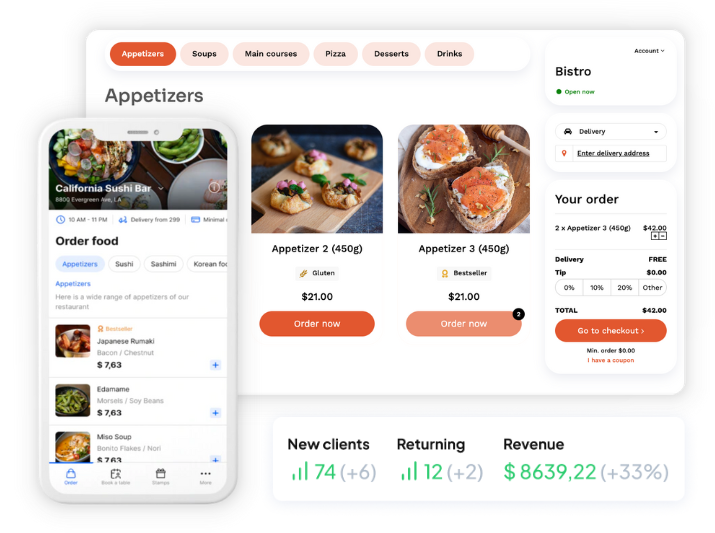
Role of Automation in Reducing Accounting Errors
Automation eliminates the need for manual data entry, significantly reducing the risk of accounting errors. Tools like accounting software automates processes such as payroll, invoice generation, and tax calculations, ensuring compliance and accuracy.
Automated systems also streamline repetitive tasks like reconciling accounts payable and bank accounts, allowing restaurant owners to focus on other aspects of their business.
Benefits of Integrated Systems Like Inventory Management Software
Integrated systems, such as inventory management software, bring together various operational elements into a centralized platform. This integration enhances visibility into critical restaurant metrics, such as cost of goods sold (COGS) and gross profit, enabling precise cost control.
For restaurants, combining these tools with modern accounting software, online ordering analytics, and a POS system ensures seamless data flow, minimizing inefficiencies and supporting informed decision-making.
Leveraging these technologies helps restaurants maintain strong financial health, improve efficiency, and ensure accurate financial reporting.
Avoiding Common Bookkeeping Mistakes
Mistakes in bookkeeping can create costly problems for restaurants, from compliance issues to lost revenue. Understanding common pitfalls and how to avoid them is essential for keeping your finances in order.
1. Overlooking Daily Sales Reports
Regularly reviewing daily sales reports ensures that sales data matches actual revenue.
Skipping this step can lead to inaccurate financial records, especially when integrating multiple restaurant revenue streams like dine-in and online orders.
Tools like a POS system simplify this process, providing clear, real-time insights.
2. Inadequate Account Reconciliation
Failure to reconcile your accounts—such as bank deposits and outgoing payments—can lead to missed discrepancies or unaccounted funds.
Monthly reconciliation ensures that all transactions align with your bank accounts and recorded expenses.
Using automated systems to assist with account reconciliation reduces errors and saves time.
3. Neglecting Payroll Liabilities and Taxes
Payroll errors, such as missed tax payments or incorrect wages, can result in penalties or employee dissatisfaction.
Automating payroll management and tracking liabilities like overtime, benefits, and payroll taxes ensures compliance and accuracy.
Systems that calculate these obligations help avoid manual missteps.
4. Ignoring Inventory Tracking
Failing to monitor inventory costs disrupts your ability to calculate cost of goods sold and control expenses.
Mismanagement can lead to overspending or waste, directly impacting profitability. Implementing an inventory management system ensures accurate tracking and provides essential data for cost analysis.
5. Relying Solely on Manual Processes
Manual bookkeeping increases the likelihood of accounting errors due to data entry mistakes or inconsistencies.
Modern solutions like cloud-based tools or modern accounting software provide automation and integrate seamlessly with your operational systems, reducing human error and improving efficiency.
6. Overlooking Regular Financial Analysis
Many restaurants fail to leverage their financial statements, such as the profit and loss statement or cash flow report, to guide decision-making.
These documents highlight areas of success and those needing improvement, offering insights into metrics like gross profit and operational performance.
Conducting these reviews is one of the most essential bookkeeping processes for staying competitive.
Examples of Effective Restaurant Bookkeeping
Strong bookkeeping practices enable restaurants to maximize efficiency, reduce costs, and maintain financial stability. Below are examples showcasing how implementing best practices and modern tools can elevate your bookkeeping processes.
Example Workflows for Tracking Daily Sales and Cash Management
Tracking Daily Sales:
- Sales data from the POS system is reviewed at the end of each day, ensuring all transactions match receipts.
- Any discrepancies are reconciled using reports generated by the online ordering system and physical sales.
- These sales figures are logged into the accounting software, contributing to updated financial statements like the profit and loss statement.
Cash Management:
- The day’s cash deposits are tallied and compared against POS records at the close of business.
- A cash flow report is updated to monitor inflows and outflows, ensuring enough cash is on hand for operational needs.
- Monthly, the restaurant reconciles bank accounts to ensure all deposits and payments are accounted for, preventing losing money due to overlooked discrepancies.
These workflows highlight the importance of technology and structured processes in maintaining accurate records and ensuring smooth financial operations.
How to Monitor Your Restaurant’s Financial Health
Monitoring the financial health of your restaurant is essential for ensuring long-term success and profitability.
Regularly evaluating key metrics and utilizing data-driven insights can help you identify trends, make adjustments, and keep your restaurant thriving.
- Focus on Key Performance Indicators (KPIs): Understanding and tracking KPIs like gross profit, labor-to-revenue ratios, and food waste percentages provide actionable insights into your operations. For instance, monitoring the sales-to-labor ratio ensures your staffing costs align with revenue during different service periods.
- Leverage Financial Statements for Insights: Documents like the profit and loss statement, balance sheet, and cash reports are more than compliance tools—they are essential resources for decision-making. Use these statements to evaluate expenses, revenue, and cost of goods sold, identifying areas for potential savings or increased investment.
- Perform Regular Cash Flow Analysis: Cash flow is the lifeblood of your business, making it vital to ensure sufficient cash availability for daily operations. A cash flow report helps pinpoint discrepancies between inflows and outflows, allowing you to address issues like slow receivables or high expenses before they escalate.
- Identify Trends and Adjust Accordingly: Review historical data and analyze trends in revenue, expenses, and customer behavior. For instance, observing seasonal patterns in sales can help you optimize staffing and inventory, preventing waste or shortages.
- Review Prime Costs Regularly: Keep a close eye on prime costs as these are your largest controllable expenses. Set a target percentage for prime costs relative to your total revenue and make adjustments as needed to maintain profitability.
- Schedule Routine Financial Checkups: Conducting monthly or quarterly financial reviews with your accountant or bookkeeper ensures your records remain accurate and up to date. These sessions also help identify any gaps or inconsistencies, ensuring compliance and preventing accounting errors.
By prioritizing these practices, restaurant operators can enhance their financial stability and proactively address challenges, positioning their business for sustained success.
Restaurant bookkeeping is more than a compliance requirement; it is a strategic tool that ensures the financial health and sustainability of your business.
By implementing modern tools, such as accounting software, the best restaurant POS systems, and online ordering systems with robust reporting features, you can streamline restaurant operations and make data-driven decisions.
These technologies not only simplify tracking but also provide actionable insights into revenue trends, customer behavior, and operational performance.
Effective management of prime costs, cash flow, and other critical metrics can empower restaurant operators to avoid common mistakes, control expenses, and capitalize on growth opportunities.
Please keep in mind that the content presented in this article is intended solely for informational use and does not constitute financial or legal counsel. For guidance on financial or legal matters, it is recommended that you seek the expertise of a certified financial advisor or a legal practitioner.
Frequently Asked Questions (FAQ)
What does a bookkeeper do for a restaurant?
A bookkeeper for a restaurant manages financial records to ensure accuracy and compliance. They track income, expenses, and sales, handle payroll processing, manage accounts payable and receivable, and prepare essential financial statements like profit and loss reports.
By reconciling accounts and monitoring prime costs, bookkeepers help restaurant owners maintain profitability and meet tax requirements, reducing the risk of penalties and audits.
What is the best accounting method for a restaurant?
According to Darcy Bookkeeping & Business Services, most restaurants use the cash accounting method for financial reporting. This method doesn’t restrict them to cash payments; it also accommodates credit card transactions and invoices with delayed payment terms. Cash accounting provides a straightforward approach to tracking income and expenses, making it a popular choice for small to medium-sized restaurants.
How to record restaurant expenses?
Recording restaurant expenses involves systematically tracking all costs to maintain accurate financial records and support effective decision-making. Here’s how to do it:
- Categorize Expenses: According to standard accounting practices, group expenses into categories such as food costs, labor costs, utilities, rent, marketing, and equipment maintenance.
- Use a General Ledger or Software: Record expenses in a general ledger or an accounting software system, ensuring each transaction is logged under the correct category.
- Track Receipts and Invoices: Keep all receipts and invoices for purchases, such as food inventory, supplies, and equipment. Digital storage solutions help organize these records and simplify audits.
- Reconcile Accounts Regularly: Reconcile expenses against bank statements or POS system reports to ensure all outflows are accounted for and no discrepancies exist.
- Monitor COGS (Cost of Goods Sold): Record inventory purchases and adjust COGS based on usage. This is crucial for tracking prime costs, which include food and labor expenses.
- Automate Expense Tracking: Utilize features in accounting software to automate recurring expenses, such as payroll, utilities, or vendor payments, reducing manual errors.
- Prepare Financial Reports: Regularly generate and review financial statements like the profit and loss statement to evaluate how expenses impact profitability and make necessary adjustments.
What is the general ledger of a restaurant?
According to standard accounting practices and resources like the American Institute of CPAs (AICPA), the general ledger of a restaurant is a comprehensive financial record that tracks all accounts used to monitor transactions. These include:
- Revenue Accounts: Tracks all income sources, including dine-in sales, takeout orders, and revenue from catering or events.
- Expense Accounts: Includes costs such as food inventory, labor, utilities, marketing, and rent.
- Cost of Goods Sold (COGS): Reflects the direct costs of ingredients and supplies used to prepare menu items.
- Asset Accounts: Records items the restaurant owns, such as cash, inventory, equipment, and property.
- Liability Accounts: Tracks debts and obligations, including loans, accounts payable, and payroll liabilities.
- Equity Accounts: Captures the owner’s investments and retained earnings.
How many hours does it take to do bookkeeping for a small business?
A bookkeeper for a restaurant ensures accurate financial records while helping owners save time. According to CSI Accounting & Payroll, small businesses typically spend 10–15 hours per month on bookkeeping, or up to 25 hours if they handle billing in-house.





